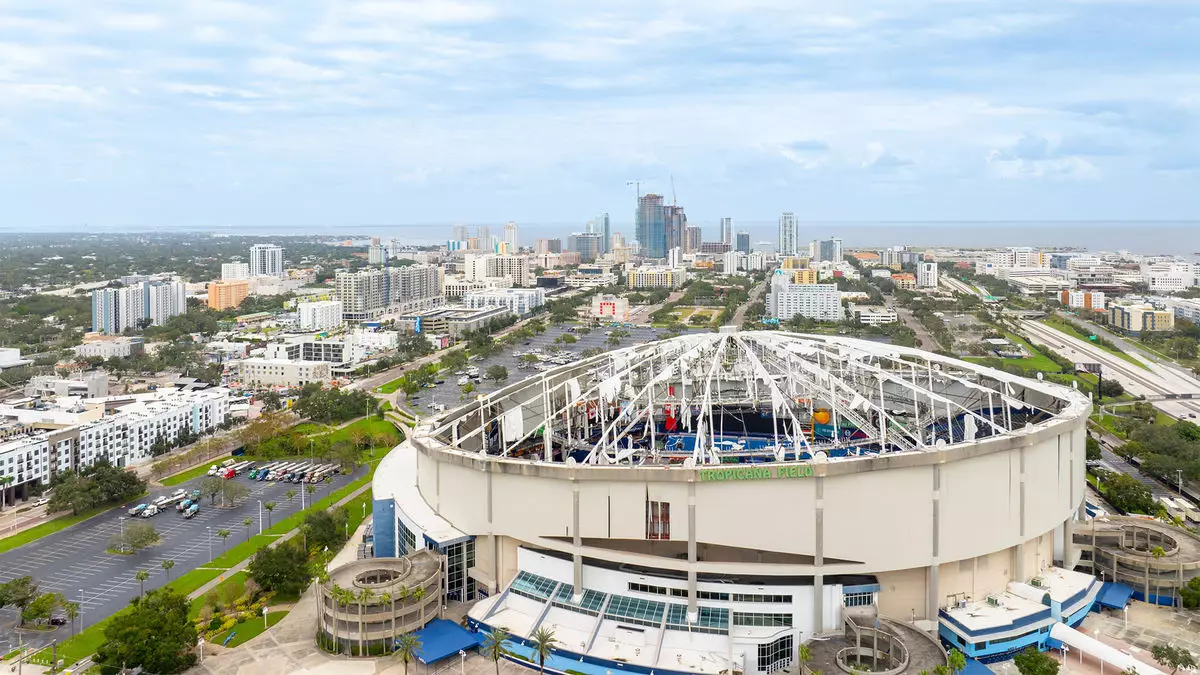The recent passage of Hurricanes Helene and Milton has marked a significant turning point for Florida, particularly in its tourism sector. With a shared devastation echoing through coastal communities, the immediate repercussions of these storms are particularly palpable along the Gulf Coast. Small, independent businesses—often the backbone of local tourism—now confront an uphill battle as they assess the damage and contemplate their future in a now-fragile landscape. The hurricanes, which wreaked havoc just weeks apart, have prompted key figures in the hospitality and tourism management field to caution against the potential for long-lasting effects.
As the dust settles, indicators suggest a seismic shift is underway. According to Arthur Huang from the University of Central Florida, continuous evaluations are expected to reveal extensive recovery timelines for attractions, infrastructure, and accommodations along the Gulf Coast. This assessment paints a troubling picture for a region that has historically flourished on the economic boost provided by tourism.
The storms struck in quick succession—the first, Hurricane Helene, made landfall as a Category 4 storm, followed closely by Hurricane Milton as a Category 3. On the ground, this translated into immediate crises for towns like St. Armands and Lido Key, where local establishments are reeling from damages. Peter Ricci, who heads Florida Atlantic University’s Hospitality and Tourism Management program, emphasizes that recovery may be particularly challenging for small-scale hoteliers and restaurateurs. Their limit on resources poses serious questions about survival in a post-storm reality.
Ricci’s insight sheds light on the harsh reality many of these businesses face. He explains that some may sometimes opt to accept insurance payouts rather than risk reopening under more stringent, modern building requirements. The dilemma leads many to exit altogether, creating a vacuum that wealthier developers are likely to fill—paving the way for upscale experiences in an area once known for its quaint, family-run establishments.
Experts predict that rebuilding and restoring the affected regions will extend far beyond mere physical damage; the economic ramifications will be felt widely. Huang points out that rising insurance premiums will burden all properties, regardless of scale or size. As costs become untenable for many mom-and-pop operations, the result could be a significant shift towards luxury hospitality, catering to more affluent visitors who can pay for the heightened costs of new constructions and premier services.
This shift raises poignant questions about the cultural landscape of Florida tourism. Will the family-friendly charm that made Gulf Coast destinations appealing give way to a more exclusive, high-end experience? While transformation can be beneficial in revitalizing storm-battered areas, it also risks alienating a demographic that has historically supported local businesses and cultural identity.
As Florida faces the aftermath of these storms, the timing couldn’t be more critical, considering that the heart of tourist season is just around the corner. Major tourism hubs like Tampa and Orlando find themselves facing potential cancellations and disruptions that could sting their bottom line. Ricci warns that the group business sector will struggle as the fallout from Helene and Milton reverberates through the schedule of events, further complicating the recovery narrative.
For properties reliant on high-volume business during peak season, maintaining profitable occupancy rates is key. The pressure mounts not just to attract new visitors but also to reclaim those lost bookings—a balancing act that will be exceptionally delicate during recovery efforts. The consequently strained relationship between maintaining existing valued visitors and onboarding new ones underscores the broader complexities at play.
In response to the turmoil, Visit Florida has initiated a comprehensive recovery strategy aimed at mitigating negative perceptions while celebrating the resilience of destinations that remain unscathed. Through targeted marketing campaigns, the organization hopes to communicate that many areas of Florida are still open for business, ready to welcome visitors with metaphorical “sunshine.”
The efforts include not only social media outreach but also collaborative partnerships with content creators to further highlight unaffected regions—ultimately aiming to reassure and retain tourist trust. Visit Florida CEO Dana Young’s assurance that support initiatives will roll out highlights the state’s dedication to restoring its tourism economy post-disaster. Ensuring timely recovery will be paramount not only for the individual businesses affected, but for the entire state’s economy, which thrives on tourism.
The immediate and long-term impact of Hurricanes Helene and Milton on Florida’s Gulf Coast will undoubtedly reshape its tourism landscape. As assessment efforts continue and businesses navigate the arduous journey of recovery, it is clear that the region stands at a crossroads—one that will determine its economic future for years to come. Regardless of the storms, the spirit of resilience and adaptation remains strong in Florida, hinting at a revitalized tourism sector that could emerge from this crisis.


Leave a Reply